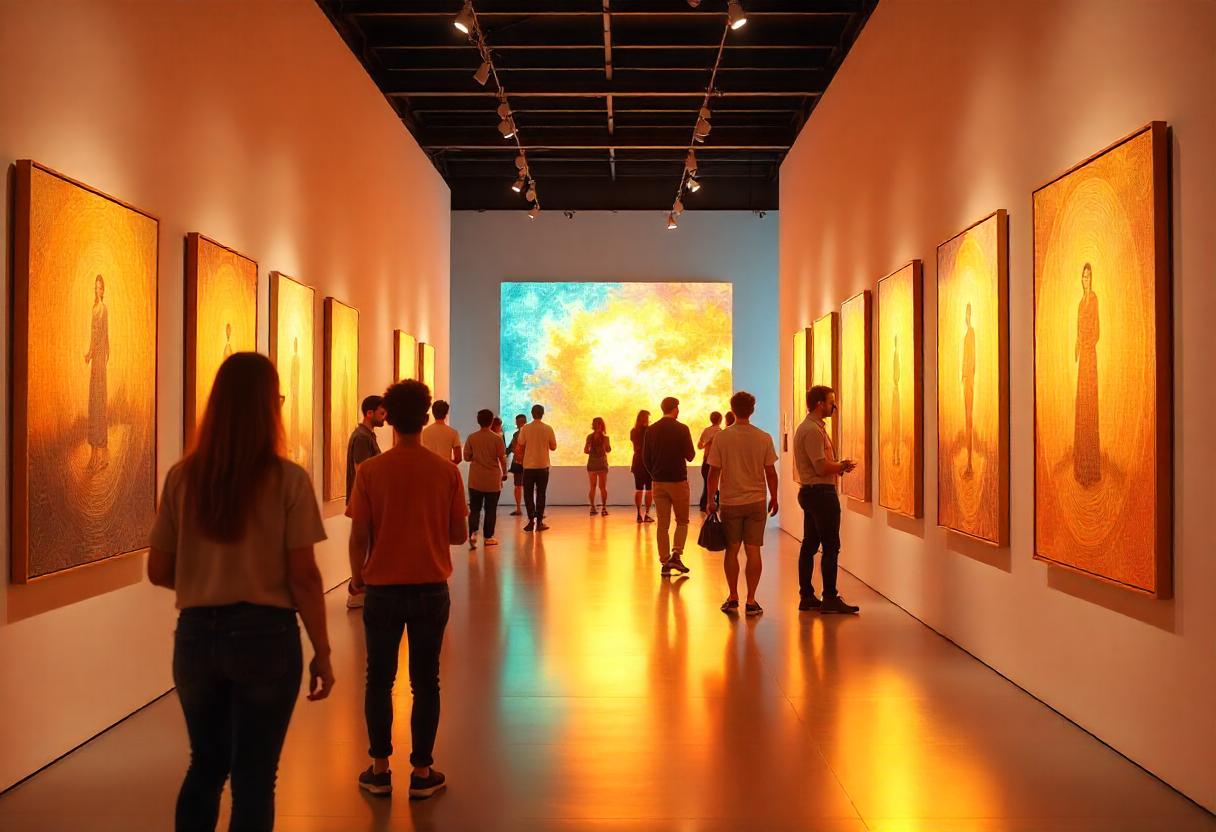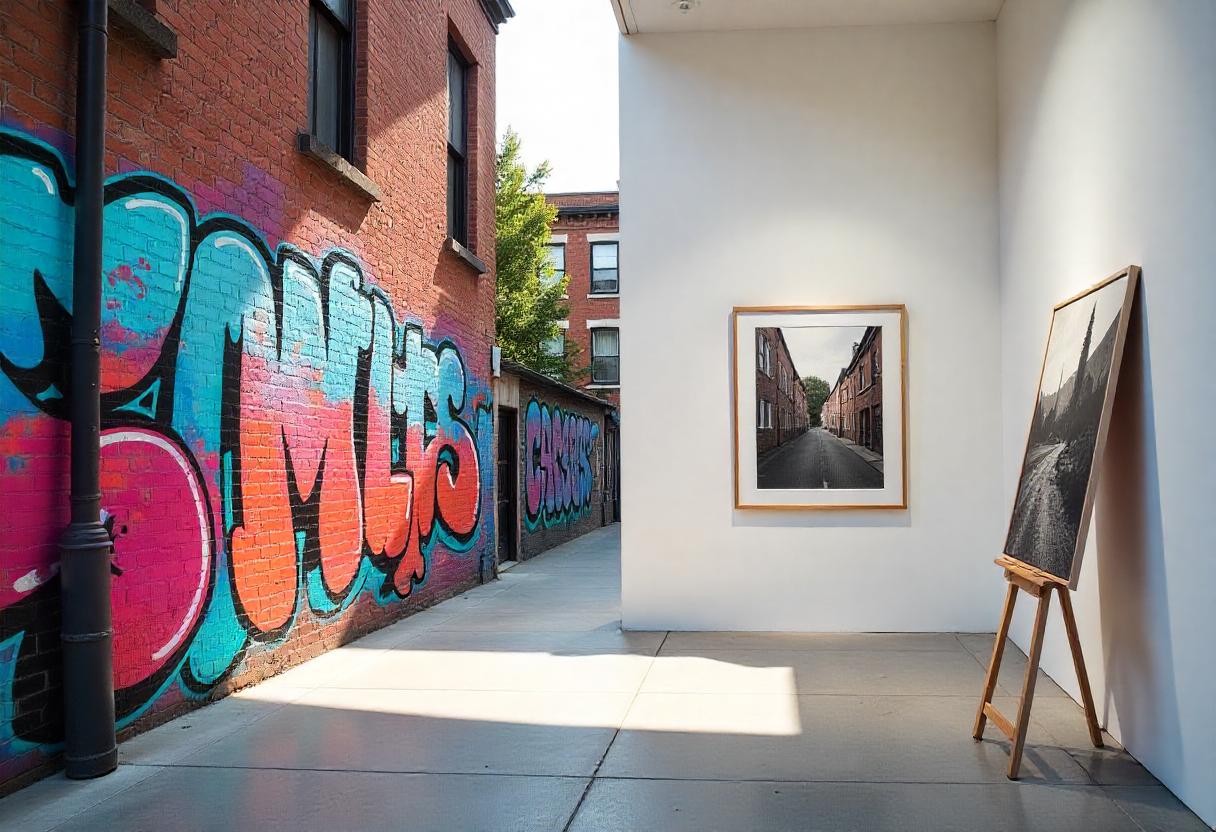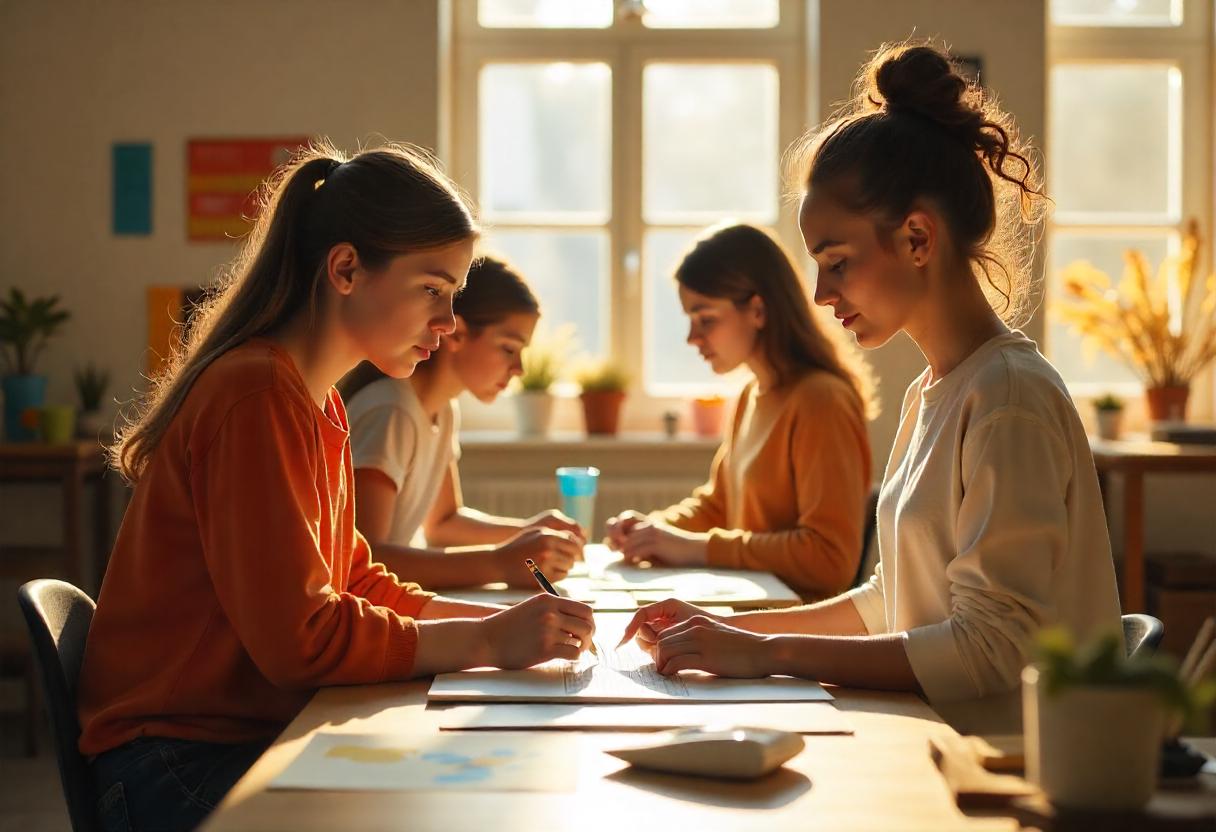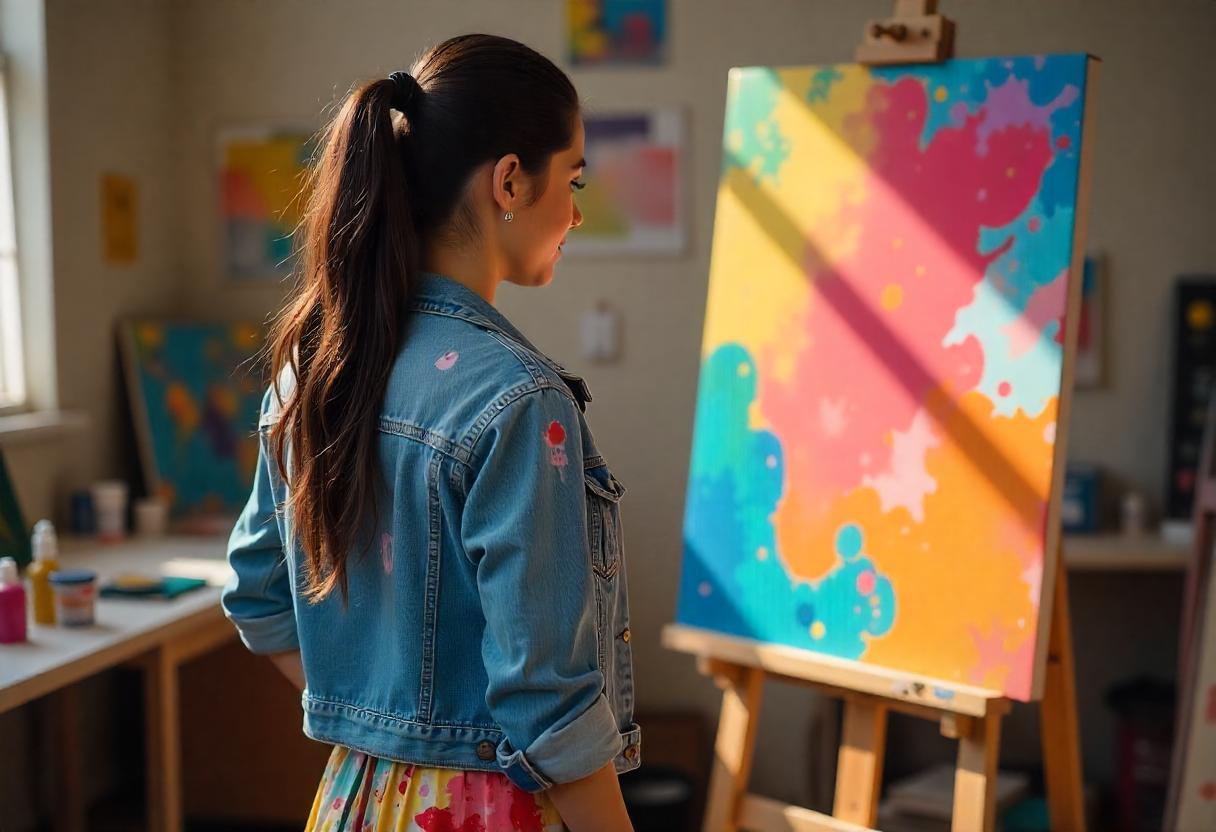The Evolution of Fine Arts: How AI is Transforming Traditional and Applied Art
These days, creating art is easy with the help of AI. You probably remember the Ghibli art trend, which took over social media, and as a result, platforms like ChatGPT saw a massive spike in traffic as people rushed to generate similar images. But again, if anyone can generate artwork in seconds, what does that mean for traditional artists who have spent years honing their skills through a fine arts course or a BFA degree? Is that fair? Or is there more to it?
Let us explore how deeply AI is becoming interwoven with both traditional and applied art, and what this means for aspiring artists stepping into a fine arts course or planning to pursue a BFA degree.
A Timeline of Fine Arts Evolution
Art has been part of human life since the Stone Age itself, starting with simple cave paintings, drawings made with natural colors, telling stories of daily life, animals, and beliefs. Back then, art wasn’t just decoration, it was how people expressed themselves, reflecting their cultural beliefs.
As time passed, art became more detailed and meaningful. In ancient Greece and Rome, artists focused on sculptures and paintings that showed perfect human forms. During the Renaissance, artists like Leonardo da Vinci and Michelangelo took the fine arts to another level, integrating creativity with science, religion, and emotion.
Do you want free career counseling?
Ignite Your Ambitions- Seize the Opportunity for a Free Career Counseling Session.
- 30+ Years in Education
- 250+ Faculties
- 30K+ Alumni Network
- 10th in World Ranking
- 1000+ Celebrity
- 120+ Countries Students Enrolled
Read Also: Fine Arts in the Digital Era: Evolution or Revolution?
Fast forward to today, fine arts is not confined to painting and sculpture, but also encompasses photography, digital design, installations, performances, fashion, and animation, thus birthing the space of Applied Art.
The world of fine arts has come a long way, from cave walls to digital screens, and it’s still changing.
Book Now →
The Arrival of AI
It is no surprise that AI is slowly becoming a part of everything we see and do, and it has now stepped into the world of art, too. So, yes, even traditional art has been touched by this wave of change.
But long before AI, technology had already started paving its way within the world of fine arts. Digital tablets, photo editing tools, and graphic design software were some of the first things artists used to make their work smoother and more flexible. These tools helped artists speed up their process, rectify mistakes easily, and explore ideas that would have been hard to try on paper or canvas. Technology, back then, was not replacing the artist; it was just helping them work better.
Fast forward to now, and AI has taken things a step further, actually creating art. Tools like MidJourney and DALL·E allow users to turn text into visuals, where you can type your idea and expect the software to create an image for you.
Do you want free career counseling?
Ignite Your Ambitions- Seize the Opportunity for a Free Career Counseling Session.So yes, AI is changing the game, but not by taking away creativity. Instead, it is becoming another tool in the artist’s toolkit, helping new creators like you try new things and find your unique style.
Read Also: 7 Creative Careers That Are Exploding Right Now
Why AI Art is on the Rise
1. Easier Access: AI tools make it simple to create digital art without needing advanced skills.
2. Quick Results: AI speeds up the creative process, helping artists explore multiple styles and ideas in less time.
3. Creative Freedom: Artists can use AI to test unique concepts, styles, and moods, which otherwise can take up to days if manually done.
4. Social Media Hype: Viral trends and filters (like the Ghibli-style AI portraits) have made AI art popular and shareable, especially among Gen Z.
Challenges & Opportunities of AI in Art
| Challenges | Opportunities |
| AI Artwork is not yet officially termed as original work, and doesn’t often count as ‘real art.’ | An artist can try different platforms for experimenting with their art style, combining their core skills with tech to create a unique hybrid style. |
| Due to less ‘human touch’, the emotional depth of traditional art is lost. | Understanding AI tools gives students an edge in modern creative industries. |
What Happens When Artists Collaborate with AI
People are now starting to see AI not as a competitor, but as a creative partner. AI can help artists break their creative blocks or try new things they might not have thought of before, which is time-saving.
Besides, AI can not understand emotions or human experience; it can copy styles, but not the feeling behind a painting or the intricate interplay of art. Therefore, even though AI is growing in art, many believe it should be used with human creativity, not instead of it.
So, as technology keeps changing the way we make art, it is up to young artists, like you, to decide how to work with it.
Read Also: From Pixels to Profit: Exploring NFTs in Digital Art
Navigating the Ethics of AI in Fine Arts
So, can a machine truly create art, or is it just copying what already exists? This debate is not just about creativity; it is also about ethics, ownership, and what it means to be an artist in today’s world.
1. Who is the real creator?
When AI generates an artwork, the person gives it a prompt or idea, but the machine makes the final image. So, who should get credit? This has started discussions about authorship and how much control artists have over AI-made art.
2. What about copyright?
Many AI models are trained using images and data already on the internet, which implies that they might be learning from existing artists’ work without permission, thus raising serious concerns about copyright and intellectual property.
3. Is AI art original?
AI tools can create beautiful visuals, but most of them follow patterns based on what they have already seen.
Therefore, owing to these changes and anticipating further transformation of the traditional and applied art sector, many fine arts colleges are now adding classes that cover digital tools, AI ethics, and new media, helping students explore how technology fits into their creative journeys.
Skills Every Modern Fine Arts Student Should Cultivate
Read Also: The Future of Art: AI, Fine Arts, and the Rise of Creative Technology
To combat the growing changes of the industry, young artists should learn a handful of skills mentioned below.
1. Creative Thinking and Concept Design
Being able to come up with strong ideas is still at the heart of any art form, and good storytelling through visuals is a skill that never goes out of style.
2. Comfort with Digital Tools
From drawing tablets to AI tools, technology is now part of many creative projects. Learning how to use software like Photoshop or Procreate, or even experimenting with tools like MidJourney or DALL·E, can give your art a whole new dimension. Most fine arts courses after 12th now include digital media in their curriculum for this reason.
3. Understanding Ethics in Art
Even if you take AI’s assistance, you should be accountable, so knowing when and how to use AI, giving credit, and being original matters and will take you to a rewarding path as an artist.
4. Flexibility and Openness to Change
Read Also: Courses After 12th Arts – Top Career Choices for Arts Students
Trends, styles, and tools change constantly; hence, being adaptable and flexible can allow you to learn new styles, after all, art is about creating anew every time.
What’s Our Take on this?
Like two sides of a coin, AI also has the potential to support the creative process instead of replacing it, aiding an artist’s vision, opening up new styles, and making creative processes more experimental and accessible.
So, if you are someone who sketches in the back of your notebook, paints to feel calm, or just knows you want to do something creative, this is your moment! But let us be honest, raw talent is the first prerequisite, and hence it needs direction, structure, and a bit of future-proofing, considering how fast the art world is changing.
At the AAFT School of Fine Arts, we have shaped our Bachelor of Fine Arts program to not just teach you how to make beautiful work, but also help you understand how tech like AI is shaping creativity. Under the mentorship of Dean George Martin, the classes are designed to provide you with a robust foundation with an industry-relevant skillset.
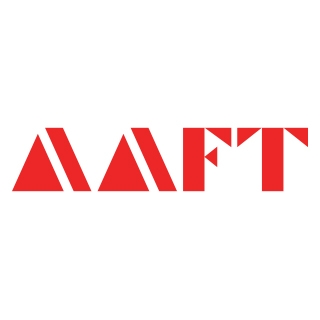
AAFT has been providing the world with limitless creativity and expression since 1993! Through a dynamic and industry-driven curriculum, AAFT provides engaging and captivating articles to persuasive blogs and empowers its readers to explore diverse avenues of creative media education-related content.


